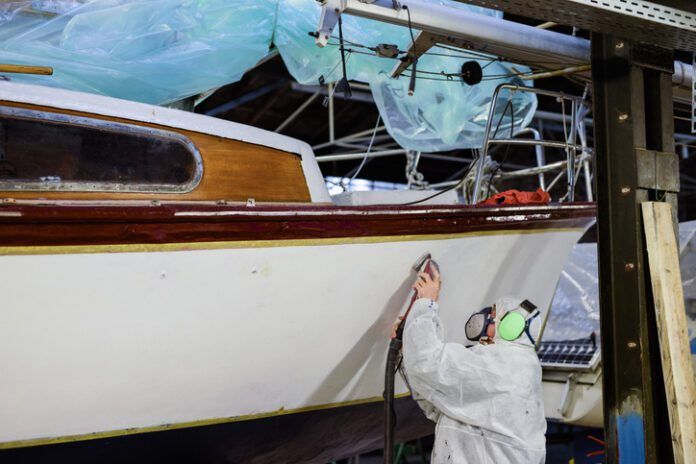We’ve all seen it. That slow buildup of brown discoloration along a boat’s waterline, sometimes growing with time to a darker brown or gray with layers of dirt, speckled black dots, a fuzzy growth, and even an embedded greasy scum. More noticeable on otherwise nice white fiberglass hulls, that boat-long streak – known along the Intracoastal Waterway as the “ICW mustache” – survives normal washdowns.
Causes vary, depending on the waters where the vessel spends most of its time. The tea-colored stain may be from natural tannin in freshwater lakes, rivers, and brackish estuaries. Tannic acids from oak bark and leaves have been used for centuries to cure leather, leaving that distinctive brown color. Add some algae growth, some metallic salts, and a little oil and pollution, and the stain from the chemical reaction on the fiberglass or paint can seem permanent.
Attacking these waterline stains should be done with care and forethought. An aggressive use of gritty cleaners like Ajax and Comet will remove some of the dirt but could damage the gelcoat. The shiny outer layer of gelcoat can be quite thin and vulnerable to rubbing with abrasive cleaners. Depending on age, UV exposure, and wax, the gelcoat will oxidize and become more porous, thus more susceptible to deeper staining. Needless to say, a well-kept, waxed hull is easier to clean than one left to the elements.
In our recent tests of 22 products that claimed to eliminate waterline stains, we found several fast-acting, cost-effective products that, when used properly, won’t harm your gel coat. Of the gel, powder, spray and liquid cleaners, we found that the thicker gels worked best and were the safest to use. They are easier to apply thanks to their easy-to-see color and their consistency.
To read the details on our waterline stain remover tests as well as more tips and advice on the care and cleaning of your gelcoat, purchase and download the Practical Sailor ebook Gelcoat Restoration & Maintenance today.
Want to read about the cleaning and maintenance of all your boating surfaces? Available for purchase and download is Practical Sailor’s ebook series, Marine Cleaners. This three volume set contains the ebooks Gelcoat Restoration & Maintenance, Essential Marine Cleaners and Specialty Marine Cleaners.
Buy all three for the price of two. It’s like getting one complete ebook FREE.









































